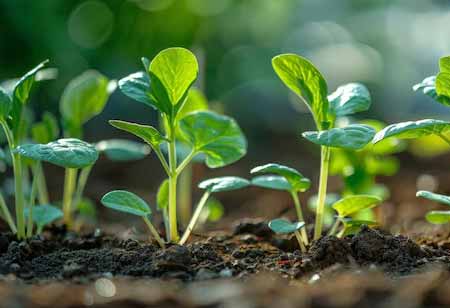Thank you for Subscribing to Agri Business Review Weekly Brief
Advancing Sustainable Farming Practices with Biostimulants in Pesticide Use
Biostimulants enhance sustainable agriculture by improving crop health, nutrient uptake, and resilience to stress, reducing reliance on chemical pesticides and promoting eco-friendly pest management practices.

By
Agri Business Review | Monday, July 21, 2025
Stay ahead of the industry with exclusive feature stories on the top companies, expert insights and the latest news delivered straight to your inbox. Subscribe today.
FREMONT CA: Biostimulants are emerging as key players in sustainable agriculture and pesticide management, offering innovative solutions to enhance crop health and resilience. These natural substances, derived from various organic sources, stimulate plant growth, improve nutrient uptake and bolster resistance to environmental stressors and pests. By integrating biostimulants into farming practices, growers can reduce their reliance on chemical pesticides, fostering a more eco-friendly approach to pest management. This supports healthier ecosystems and aligns with the growing consumer demand for sustainable agricultural products.
Integrating biostimulants with pesticides presents a promising approach to reducing reliance on synthetic chemicals in agriculture. By combining these two inputs, farmers can enhance the effectiveness of pesticides while promoting plant health and resilience. Certain biostimulants improve the retention of pesticide-active ingredients on leaf surfaces or stimulate beneficial microbes that enhance biopesticide action. This synergistic effect can lead to better pest and disease control, reducing the need for repeated pesticide applications.
Advantages of Integrating Biostimulants with Pesticides
Enhanced Plant Tolerance to Stress
Biostimulants can help plants cope with abiotic stresses such as drought, salinity, and temperature extremes, which are common agricultural challenges. When used alongside pesticides, biostimulants can mitigate the stress caused by pesticide application, resulting in healthier and more resilient crops. This improved tolerance allows plants to thrive under adverse conditions, contributing to overall agricultural sustainability.
Improved Nutrient Uptake
Some biostimulants, such as humic acids, enhance the absorption of nutrients and pesticides, ensuring that plants receive maximum benefits from both inputs. This increased nutrient uptake can lead to better growth, higher yields, and improved crop quality. By facilitating the efficient use of resources, biostimulants help farmers achieve better returns on their agricultural investments.
Potential for Reduced Agrochemical Use
The combination of biostimulants and pesticides has the potential to reduce the overall need for synthetic agrochemicals. By enhancing the efficacy of pesticides, biostimulants can lower the required dosage, thereby minimizing the environmental impact of chemical inputs. This reduction in agrochemical use aligns with the growing demand for sustainable agricultural practices and contributes to a healthier ecosystem.
The source of a biostimulant—be it seaweed, amino acids, or microbial inoculants—along with preparation methods like hydrolysis or fluid extraction and storage techniques, are crucial factors that influence the effectiveness of biostimulant formulations. Understanding these elements is vital for optimizing the performance of biostimulants in enhancing plant growth across various species.
Several factors must be considered to integrate biostimulants into sustainable farming practices effectively. Soil health plays a critical role in determining the effectiveness of biostimulants, as healthy soils support microbial activity and nutrient cycling, enhancing their benefits. Additionally, the choice of biostimulant should align with the specific crop type and growth stage, as some formulations may be more effective for promoting germination. In contrast, others excel in enhancing fruit development. The application method is also essential; biostimulants can be delivered through foliar sprays, soil applications, or seed treatments, with the most effective method varying based on the specific biostimulant and crop. Lastly, continuous monitoring and evaluation of the effects on crop growth, yield and quality are essential to determine optimal application rates and timing.
As farmers increasingly seek sustainable solutions to combat challenges such as climate change, soil degradation, and pest resistance, integrating biostimulants into agricultural practices will become increasingly vital. Embracing biostimulants supports the transition to more sustainable farming methods and aligns with consumer demands for environmentally friendly products, paving the way for a more resilient and responsible agricultural future.





